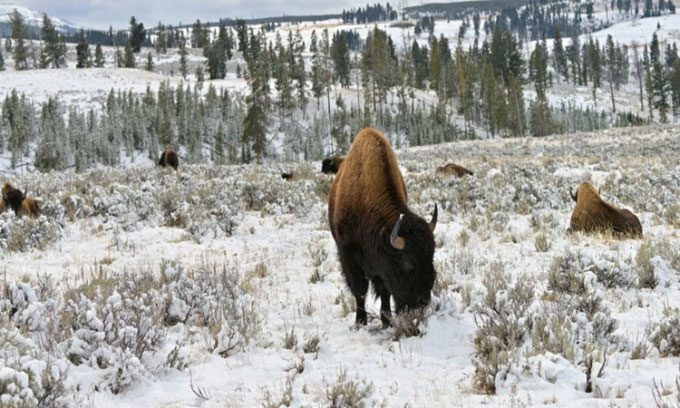As permafrost melts due to climate change, it may release significant amounts of radon gas, a colorless and odorless gas linked to lung cancer.
Scientists warn that melting permafrost in the Arctic could release radon, a radioactive gas that poses cancer risks, according to a report by Live Science on February 23. The year-round frozen permafrost in the Arctic acts like a lid, preventing a multitude of gases from escaping into the atmosphere. Perhaps the most notorious among these is methane, a potent greenhouse gas released when permafrost thaws, thereby accelerating climate change.

Permafrost in the Arctic. (Photo: University of Oxford).
A recent study published in the March issue of the journal Earth-Science Reviews reveals another dangerous gas lurking beneath the Arctic permafrost: radon. This colorless, odorless gas is a byproduct of the natural radioactive decay of uranium. It can accumulate in homes, especially in basements, raising long-term cancer risks for residents. According to the U.S. Environmental Protection Agency, radon is the second leading cause of cancer in the U.S., responsible for 21,000 deaths each year.
Currently, radon is not yet an urgent issue in the Arctic or sub-Arctic regions, where the ground remains frozen year-round. This is because permafrost prevents radon gas from rising to the surface, as explained by Paul Goodfellow, a geological hazards program expert at the Alaska Geophysical and Geological Survey. However, as permafrost continues to melt, this protective barrier is gradually disappearing.
In their new study, scientists led by Jian Cui at the Harbin Institute of Technology gathered previous research on radon in permafrost areas, including Alaska and the northeastern Chinese province of Heilongjiang. The findings indicate that the degradation of permafrost could facilitate radon escaping into homes and workplaces.
According to Art Nash, an energy expert at the University of Alaska Fairbanks, permafrost does not melt in an organized manner from top to bottom. Instead, the thawing occurs unevenly, creating numerous cracks and fissures. Common geological activity in Alaska could generate new fault lines through which radon could escape.
There are many questions regarding how radon interacts with other gases trapped beneath the permafrost. The most concerning gas is methane. If released in large quantities, methane could quickly exacerbate global warming. Another chemical of concern is methylmercury, a neurotoxin that can accumulate in water and animal tissues within the food chain.
Answering these questions presents a long-term challenge. “We hope to gather more data in the next 5 to 10 years”, Goodfellow stated.


















































